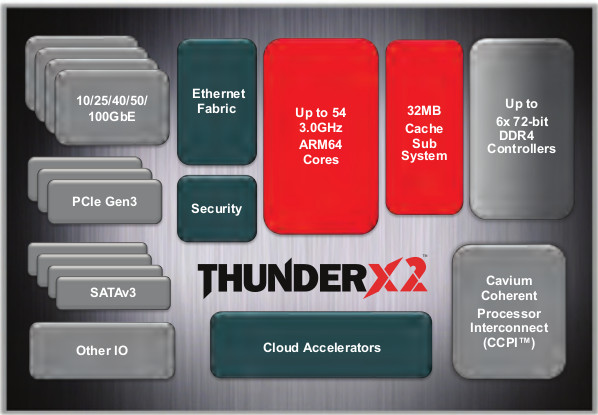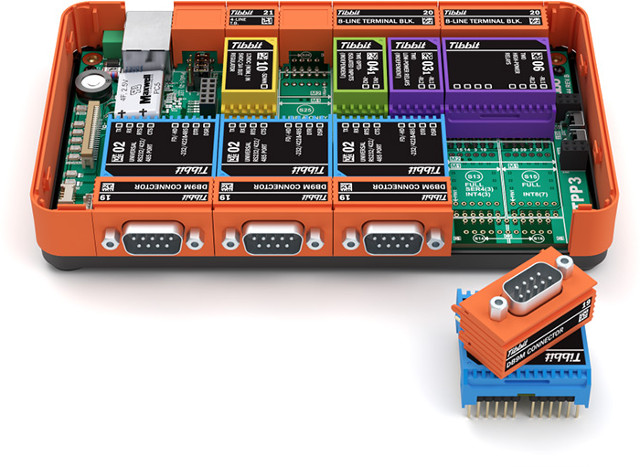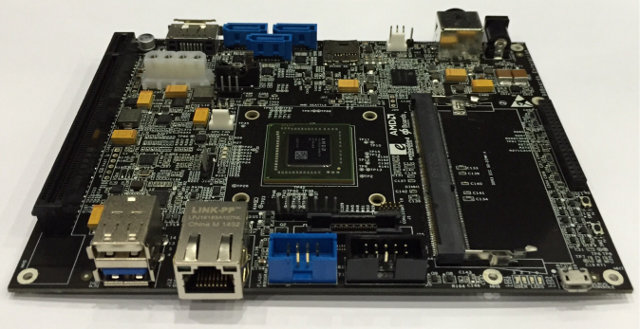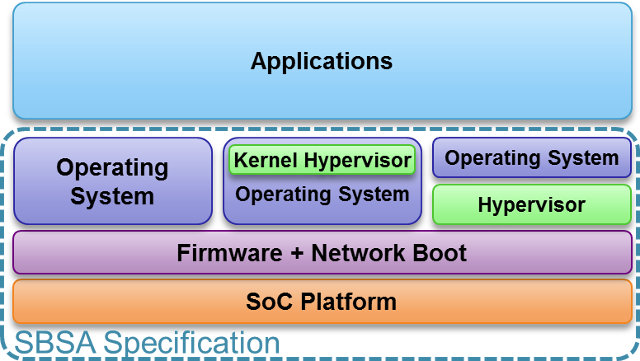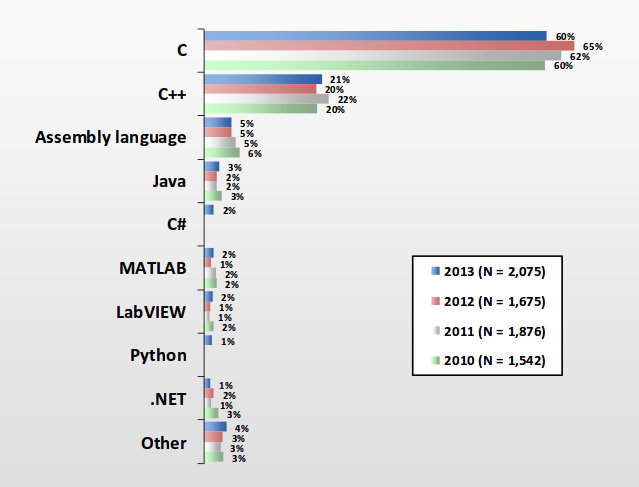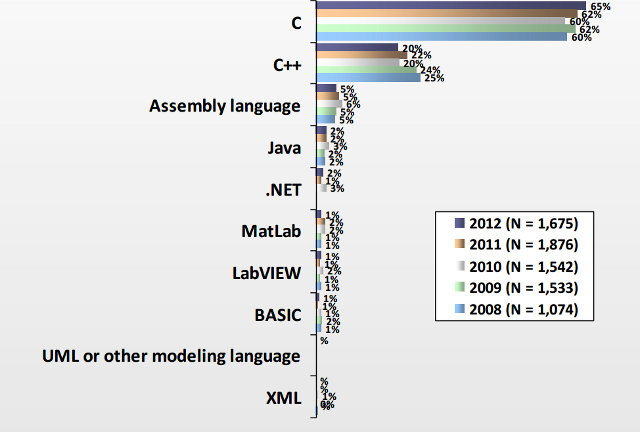Cavium announced their first 64-bit ARM Server SoCs with the 48-core ThunderX at Computex 2014. Two years later, the company has now introduced the second generation, aptly named ThunderX2, with 54 64-bit ARM cores @ up to 3.0 GHz and promising two to three times more performance than the previous generation. Key features of the new server processor include: 2nd generation of full custom Cavium ARM core; Multi-Issue, Fully OOO; 2.4 to 2.8 GHz in normal mode, Up to 3 GHz in Turbo mode. Up to 54 cores per socket delivering > 2-3X socket level performance compared to ThunderX Cache – 64K I-Cache and 40K D-Cache, highly associative; 32MB shared Last Level Cache (LLC). Single and dual socket configuration support using 2nd generation of Cavium Coherent Interconnect with > 2.5X coherent bandwidth compared to ThunderX System Memory 6x DDR4 memory controllers per socket supporting up to 3 TB RAM in […]
Tibbo Project System is a Modular Linux IoT Prototyping Platform based on TI Sitara Cortex A8 Processor
If you’ve found yourself needing to quickly demo a system that does not look like a mess of wire to a customer, or your project is requires low production volumes, making the cost of designing your own and mass-producing the hardware prohibitive, Tibbo Project System might be worth looking into. It features an almost bare board powered by Texas Instruments Sitara processor, and a large area for Tibbit blocks to add features as needed, as well as an enclosure. Size 3 Linux Project PCB (LTPP3) specifications: SoC – Texas Instruments Sitara AM335x Cortex A8 processor up to 1.0 GHz System Memory – 512 MB DDR3 Storage – 512 MB NAND flash, 2KB EEPROM, optional micro SD slot Connectivity – 10/100M Ethernet (RJ45), optional WiFi (via LW1000 module) and GPRS connectivity (via Tibbit #47) Expansion – 51 I/Os: 7x tiles 14x sockets for Tibbit module including 4x with UART capability up […]
96Boards Enterprise Edition Specification Published
When AMD announces its 96Boards Enterprise Edition complaint server board, I could read quite a few complains because the board used a non-standard form-factor such as mini-ITX. The first version 96Boards Enterprise Edition specification has now been published, and the goods news is that there are two versions: the low cost ($199 to $399) “Standard version” with the new proprietary format, and likely more expensive “MicroATX version” that must complies with MicroATX v1.2 specs. The minimum hardware requirements are listed as follows: Small form factor Standard EE version – 160 x 120mm microATX EE version – 244 x 244mm Design is SoC independent (targets 32 or 64 bit SoCs) 1GB RAM (16GB strongly recommended for server software development) Minimum on-board connectors and expansion I/O 1x Serial over USB UART with microUSB interface 2x USB 1x RJ45 Ethernet Standard version board power from low cost 12V DC Jack connector or standard […]
Linaro Connect Asia 2014 Opening Keynote – Status and Future of ARMv8 Linux & Android [Video]
Linaro Connect Asia 2014 has just started in Macau today and will take place until Friday. You can follow the sessions live and/or their recordings via Linaro OnAir YouTube Channel. I’ve watched the opening keynote, and embedded the video at the bottom of this post. The keynote focuses on ARMv8 for Linux and Android on servers, mobile devices, digital home, and more, and involves two main speakers: George Grey, Linaro CEO , and Jon Masters, Chief ARM Architecture at Red Hat. The speaker beginning of the video provides some practical information and the schedule for Linaro Connect. The keynote itself really starts around 15:50 with George Grey who spends the first 10 minutes introducing the latest Linaro members: Qualcomm, Mediatek, ZTE, AllWinner and Comcast. He then talks about the new Mobile sub-committee (MOBSCOM) that will focus on big.LITTLE, Android optimization and Android on ARMv8, as well as the soon-to-be-announced Linaro […]
Applied Micro X-Gene X-C1 ARMv8 Server Development Board is Now Available for Pre-order
Applied Micro X-Gene is the very first processor to use ARM 64-bit architecture (ARMv8), not Cortex A53 or Cortex A57, but a custom implementation, and last year we’ve seen the company’s ARMv8 development board running 4 Linux virtual machines via KVM. The platform, called X-Gene X-C1, can now be pre-ordered to develop private cloud, public cloud, and enterprise applications. There’s limited public information for now, but I could derive specifications from a few places on the web and available pictures: SoC – Applied Micro X-Gene eight core ARMv8 processor @ 2+GHz System Memory – 2x DDR3 memory slots Storage – 4x SATA 2/3 ports + SD card slot Connectivity – 3x 10 Gb Ethernet ports USB – 2x SuperSpeed USB 3.0 ports, 1x mini USB port Expansion – PCIe Gen 3 Monitoring DB9 Serial port Power – ATX I don’t know what’s the metallic connector with holes between the two […]
ARM Unveils Server Base System Architecture Specification (SBSA) to Standardize ARM based Servers
64-bit ARM based servers should hit the market later this year or earlier in 2015 with SoCs such as Applied Micro X-Gene or AMD Opteron A1100. ARM still has the lead in terms of efficiency with a lower dollar per watt ratio, but Intel is closing in with their new Avoton server-on-chips. However, there’s one aspect where Intel is clearly in the lead: standardization and compatibility. ARM is very flexible, and allow SoC designers to create more or less what they want, but it comes at the cost that most ARM based systems are not capable of running mainline Linux, and instead use vendor trees. With many applications, that may not be critical, but when it comes to data-centers, companies want to be able to run the latest Linux version with the latest security patches as soon as possible, and want to lower the total cost of ownership (TCO), so […]
2013 Embedded Market Study – Software Development & Processors
UBM releases a study of the embedded market every year, by surveying over 1,000 embedded professional every year. They’ve just published their 2013 Embedded Market Study (85 pages report), after surveying over 2,000 engineers and managers, so let’s see whether anything has evolved in the software development and processor space compared to 2012. Again this year, most respondents are based in the US (62%), followed by Europe (20%), and Asia (12%). C/C++ languages still rule the embedded world with 81% market share, although a little less than last year (85%), assembler is a distant third (5%). Interestingly, the average size of development teams seems to have shrunk from 15.9 in 2012 to 14.6 in 2013, the average project being composed of 4 software engineers, 2.9 hardware engineers, 2.7 firmware engineers, 2 QA/Test engineers, 1.5 system integrators, and 1.5 with other functions. About a third of project last less than 6 […]
2012 Embedded Market Study – Software Development & Processors
I’ve just come across an Embedded System Study by UBM published in April 2012. The company surveyed over 1,700 professionals working on embedded systems who are mainly based in the US (56%), but also in Europe (21%) and Asia (12%). The report is 87 long, but I found some of the slides are particularly interesting in regards to programming languages, operating systems and software life cycle, as well as processor/micro-controller choices. Unsurprisingly C (65%), C++ (20%) and assembler (5%) are still the main languages used for embedded software development. In this report, we also learn that the average team is composed of 14.5 members including 5.6 software engineers, 5.6 hardware engineers and 3.3 firmware engineers. 2012 was the first year they included QA Engineers and system integrators both with 2.6 members on average working on projects lasting from less than 6 months to over 25 months. UBM survey also provides a […]


